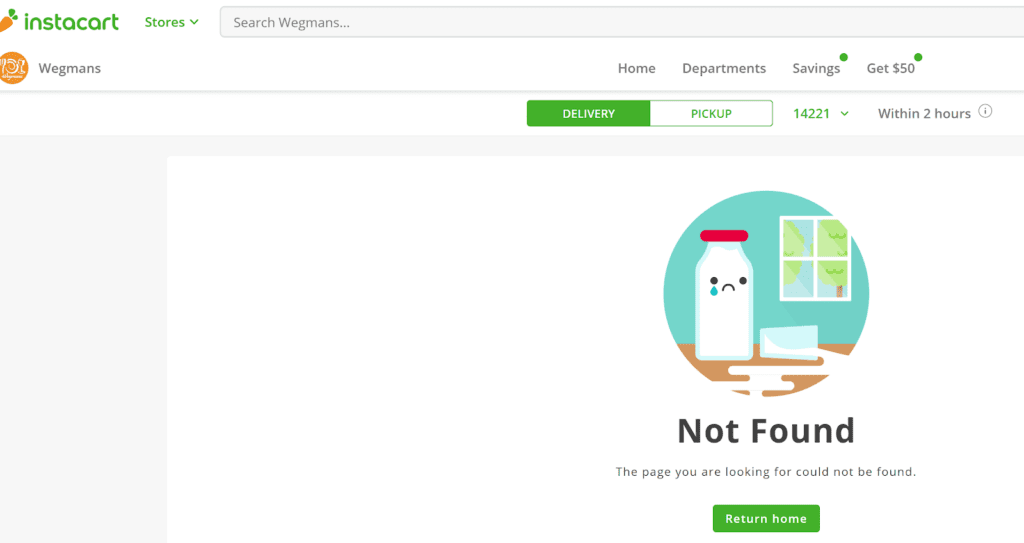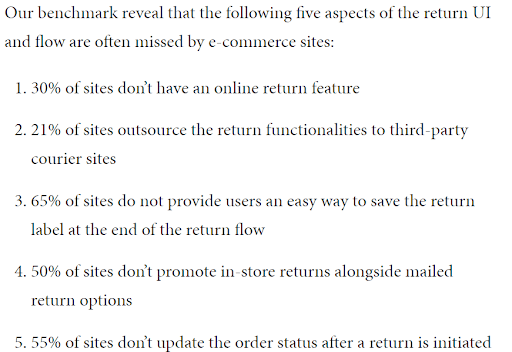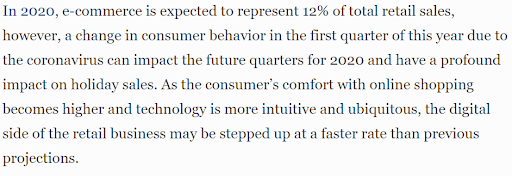4 Quick Ways to Audit Your Site Ahead of the Holiday Shopping Season
Here are a few big wins you can score ahead of the holidays. Use this to make your to-do list, check it twice, and we promise your holidays will be nice.

I’ve been there. Customers are bouncing from your website after a single search. They’re not buying as much as expected. Competitors are scooping them up. The analytics make your cringe. But where do you start?
You need a few big wins that you can tackle in the next couple months ahead of holiday to delight your customers (and your boss). I’ve put together a hitlist to tackle common ecommerce issues that will set you up for success this holiday season.
Garbage in Garbage Out
Product data is at the core of search, browse, filtering, sorting, and comparing — all the features that can make or break a great customer experience. You can put the Ferrari of search engines on your site and it’s still going to struggle if your product data is not cleaned up and normalized.
Whether you’re selling your own branded products or a retailer of a wide variety of categories, this is a challenge. Either you can’t collect the depth of information you’d like from your manufacturers or the vendors are providing data in different formats and with varying levels of quality.
According to Baymard 52% of sites don’t post-process vendor-supplied product data. This is a huge problem when it comes to helping your shoppers find what they’re looking for quickly and effectively. Some tips to help establish consistency here involve:
- Avoid missing product data: This is a leading symptom of the damaging “false negative” problem. For example, when some jackets have data for down fill count and others don’t have data for that field, when you filter or search, the products with missing data are automatically excluded.
- Normalize features across brands: Patagonia may call it ‘water repellent’ and Columbia may call it ‘waterproof’. Rather than having two filters with two different facet values, normalize this and make it easy for your shoppers to navigate the assortments.
- Use consistent units of measurement: Horsepower, HP, H.P, hp, and so on. Clean this up so values that are truly the same roll up to one. This will help with both filtering and searching.
- Avoid jargon and abbreviations: Don’t title a filter MP’s, call it megapixels. These little nuances can make it challenging for shoppers to understand and explore your site.
The goal ahead of holiday is to be hyper diligent with product data for all the new products rolling out. Start with those and then work your way back through the most popular products and categories. Establish a mini-task force to tackle this for a few hours each day. Track searches and purchases of updated items over time; it’s likely that their sales will tick up as they become easier to find.
|
|
Here is an example of product data that needs some help from Walmart.com. Having a clean list of filter values goes a long way to making it easy for the customer, especially on mobile devices. |
Dead Ends Are the Worst
And the easiest to fix! Think about it… you’re driving along looking for a house in a neighborhood you haven’t been to before (pre phone GPS, in the times of Mapquest printouts). You take a turn on the street you think will get you there and see the sign, Dead End. Nothing is more annoying.
The same goes for ecommerce.
You click on a category, a typeahead suggestion, or even a product thumbnail. You 404 and decide to look elsewhere. And likely, there is a lot of Google traffic experiencing this as well.
These are easy fixes! Get your analytics team to run 404 reports with the referring URL, sort by most occurrences, and start at the top. Here you find what pages are dead ends and how shoppers are getting there. Get this cleaned up ahead of holiday to ensure smooth shopping experiences.
 |
Instacart takes me to a dead-end, no recommended next steps for getting groceries delivered. |
Don’t Use Duct Tape, Fix the Problem
Search can be emotional. The CEO can fire off an email and say, “Fix this, I can’t believe this!” Zero results for their jean size. So you have the team put in a quick and dirty rule to fix that problem and you’re back to the day to day. Rules here and rules there and you’re holding together a house with duct tape. It won’t survive the next storm… or the holiday rush.

Tuning your search engine ahead of holiday will yield generous returns. Take your top 100 searches from the body of your search logs for holiday last year and last week. This should give you 200 searches. Tackle these terms with one of the following approaches to identify problem themes that are plaguing your search logs:
Scorecarding
This is an exercise in which you score the searches 1-5 for recall and relevancy. Take the lowest performers and determine the root cause, then solve for themes and retest all searches to ensure no negative impact to the top performers.
NDCG
This is a calculation approach that measures quality across a breadth of searches over time. As you tune the search engine, continue to take measurements to ensure the score is improving.
Quepid
This is an open source technology used to compare search results side by side for different search strategies to see which strategy is creating the best results.
Prioritize the low hanging fruit, the problems that are big wins with easy fixes, and solve for those. These problems need to be resolved with the search algorithm so you can free yourself from a messy web of endless rules. This will ensure coverage around all iterations of that problem when the rush comes for holiday.
Differentiate for the Win
What’s the biggest day for ecommerce sales? Black Friday.
What’s the biggest day for returns? The day after Christmas.
What’s a huge wild card this year? Whether or not retail stores will be open due to the pandemic.
Now is the time to prepare for how to handle returns, as a company. Logistics, commerce, and customer service all need to plan this out together. Can you leverage chatbots to assist with return requests? Do you have an easy way for customers to print labels and schedule pickups or find drop offs? Who is going to pay for the return shipping? Can you process returns quickly to credit funds ASAP?
Once you have these conversations and implement solutions, it’s time to market this to your customers. Oddly enough, a major conversion driver this year is going to come from touting fast, easy, free, returns. 54% of sites have substantial UX issues with their returns interface. Differentiate this holiday season and be prepared for the new systems and processes to be under pressure.
 |
There is a huge opportunity to edge out the competition with a thought-out and effective return process; Statistics from Baymard |
Speeds, Feeds, and the Pandemic; Double It
Every year it’s easy to take a look at the previous year’s traffic growth and transaction growth and put together a load test strategy that will hit the mark. Scale up, scale down, hit peak, and you’re all set. This year we should take last year’s peak and double it. Not only that, but make sure the data used for load tests is real data. Take last year’s holiday sessions and use that. This will ensure that load testing will hit on all components of the site that are critical to holiday shopping.
By way of the pandemic, 2020 has created many savvy online shoppers. People who would never shop online can now only shop online. And turns out they liked it! Forbes highlights that similar to how the holidays attract and convert shoppers to ecommerce, so has the pandemic. It’s critical that performance testing is taken to the next level and you’re confident that the site can handle much more than your original projects suggested.
 |
The pandemic has created a step shift in adoption of online shopping for a new group of shoppers. This accelerated rate of adoption will drive holiday sales beyond predictions; statistics from Forbes. |
Don’t Panic
Worried that there is too much to do before holiday? Don’t panic. Identify the core problems and low hanging fruit, organize, and start moving down your checklist. Establish task forces to lead and execute in each of these areas. Keep the teams motivated and rested and before you know it, holidays will be here, the site will be ready, and your customers will show their satisfaction with their dollars.
LEARN MORE
Contact us today to learn how Lucidworks can help your team create powerful search and discovery applications for your customers and employees.
